Unit content
Life on this planet is extremely diverse with organisms living in the most extreme conditions, from the polar icecaps to the hottest deserts. Millions of years of natural selection have allowed organisms to become suited to their environment through a variety of structural and behavioral adaptations. What will happen when their environment changes? Climate change threatens to rapidly alter ecosystems. Organisms may not be suited to the new environments; some may show the ability to adapt, some may become refugees, and some, unfortunately, will not make it. This unit focuses on the impact of climate change on specific animals. Students will explore a number of species of animals that are threatened by modern anthropogenic climate change.
Natural selection and adaptations
In 1859, Charles Darwin published the seminal book, On the Origin of Species5. In this, Darwin described his theory explaining evolution by means of natural selection. One of the most important concepts of natural selection is the idea of adaptation. If an organism possesses a trait that allows them to adapt/be successful in their current environment, that trait will be selected for by nature. Because the organism possesses the trait, they are more equipped to survive, reproduce, and pass the trait on to their offspring. The offspring that are born with this trait have an advantage over conspecifics that do not have the trait. Over many, many generations, the adaptive trait becomes ubiquitous in the species in the ecological niche in which it is suited. Adaptations can be structural in nature: a part of the animal’s body. For example, chameleons have the ability to change their skin color patterns to camouflage from predators and monkeys have prehensile tails that allow them to grasp branches and swing through trees. Adaptations can also be behavioral; a way in which the animal behaves that allows them to be successful in their environment. Spiders spin webs to catch insects, male birds of paradise perform elaborate dances to attract females, and crocodiles sit quietly at the edge of water, waiting to ambush a prey. Every species of animal has a series of structural and behavioral adaptations that allow them to feed, avoid becoming food, and reproduce. For natural selection, an animal’s adaptations are specifically selected for in their ecological niche.
Part 1: Climate change
The Earth’s climate has undergone many changes over time with ice ages followed by periods of warming. These changes have been caused by natural phenomenon and are cyclical in nature. The current shift in the climate is unlike any other in recorded history. The Earth is warming due to activity of humans at an alarming rate. Since 1880, 9 of the hottest 10 years have occurred in the last decade6. Average temperatures in the United States have increased by 1.8° F since 1900 and climate models predict an additional 2.5° F – 12° F by the end of the century.
The cause of the increasing temperatures is human activity. Since the industrial revolution, humans have been burning fossil fuels for energy. Coal, oil, and natural gas are combusted to create electricity or propel engines. Though there has been an increase in the use of renewable energy in the last 15 years, the amount of fossil fuels being burned world-wide is as high as ever6, at upwards of 15 billion metric tons per year. A byproduct of the burning of fossil fuels is the greenhouse gas carbon dioxide, CO2. Measures of CO2 levels in the atmosphere have shown an increase of 50% since the start of the industrial revolution7. As CO2 levels increase, temperatures increase as well.
Greenhouse effects
CO2 is an example of a greenhouse gas (GHG); a name used for anything that contributes to the greenhouse effect. This effect occurs when solar radiation becomes trapped in the atmosphere. The greenhouse effect is not necessarily bad. Indeed, if there were no GHGs, radiation from the sun would hit the surface of the Earth and radiate back into space. The temperature would be right about 0o F on average around the world. Because our atmosphere naturally has GHGs, part of the infrared radiation emitted from the earth is trapped in the atmosphere, and the planet is warm and capable of life. Burning of fossil fuels, however, is leading to more CO2 in the atmosphere than at an any other time in recorded history. Scientists have been able to measure atmospheric CO2 levels for the last 800,000 years through the analysis of ice core data. In Greenland and Antarctica, layers of ice up to 3 km deep have been stacking up for at least 800,000 years. Small bubbles of air are frozen into the ice. By drilling deep into the ice and removing core samples, scientists can extract the air bubbles and measure concentrations of GHGs8,9. Figure 1 shows levels of CO2 in the atmosphere over the last 800,000 years. The data show that CO2 levels have fluctuated a great deal over time due to natural variations, but the highest previous concentration was about 300 parts per million (PPM). In the last 70 plus years, levels have been increasing dramatically. In July of 2022, CO2 levels have reached 421 parts per million10. More CO2 means a stronger greenhouse effect which means higher temperatures.
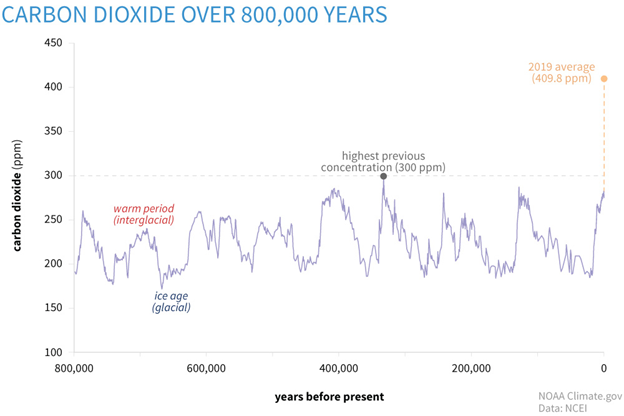
Figure 1: Global Atmospheric CO2 levels for the last 800,000 years. Levels before 1958 were measured through data from ice cores. Graph by NOAA Climate.gov based on data from NOAA NCEI Paleoclimatology Program.
Rising temperatures and IPCC models
CO2 levels will continue to rise and temperatures around the globe will increase along with it. Indeed, global temperatures have been rising steadily since 1960 (see Figure 2). Temperatures will continue to increase due to CO2 levels. In fact, if we could wave a magic wand and instantly stop the production of more CO2, we could still expect an additional increase of temperature 1.1o F globally just based upon how much CO2 is already in the air11 (sometimes called committed warming), and this warming could persist for hundreds or thousands of years. Alas, a magic wand is not available at the moment, so we can expect more CO2 release and even more warming.
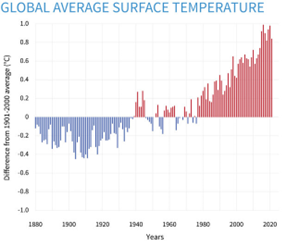
Figure 2: Difference of average global surface temperature (oC) per year compared to the 1901-2000 average. NOAA Climate.gov graph, based on data from the National Centers for Environmental Information.
How much of an increase will happen in the future? That is to be determined. The long-term outcome depends on how we respond to the problem at hand. To predict climate change under various scenarios, the IPCC has put forth several different scenarios and scientists have built computer model to go with each12. Each scenario makes assumptions about how much GHG release can be curbed moving forward. For simplicity, I am going to consider 3 of these models. The “Low” model is the RCP 2.6 scenario. It is a model that supposes that nations around the world are able to severely cut GHG emissions and is in alignment with the goals of the Paris Climate Agreement of 2015 to try to limit global temperature increase to 2o C (3.6o F). In this scenario, countries around the world set goals of reducing GHG emissions from between 22% and 70% by 2030 (each country set their own goal). I call this the Low model, because it predicts significantly lower levels of GHG than other models. It should be noted that while GHG emissions have been in decline, most countries are not on pace to reach their Paris targets13. For the Medium scenario (RCP 4.5), it proposes that GHG emissions continue, peak by 2040, and then a significant reduction by 2100. The High scenario (RCP 8.5) assumes the worst-case scenario, that GHG levels will continue as usual without reductions.
Under the Low scenario, the model predicts global temperatures increase by only 0.4 – 2.7o F (relative to the average from 1986-2015) by 2100. Under the Medium scenario, temperatures increase from 1.7o F – 4.4oF. For the high scenario, global temperatures increase by 4.2oF -8.5oF, and an increase of 12oF cannot be ruled out. Which model is most likely to be correct? That is hard to say. Investments are being made into renewable energy and technological advancements are leading to more energy efficiencies. There seems to be political capital to combat climate change, but is it enough and will it be in time?
Climate change is more than just rising temperatures
Warm temperatures are only one consequence of a warming climate. This unit cannot be exhaustive on the effects, and I encourage you to seek out the report from the Fourth National Climate Assessment14. Here are a few: precipitation patterns will change around the world leading to areas stricken by severe drought (and wildfires) with other areas seeing considerable flooding. Sea level rise due to thermal expansion and melting glaciers will lead to widespread flooding in coastal areas displacing millions of people. Hurricanes will be much more intense. Entire ecosystems will be destroyed or severely altered. Air quality will suffer, especially in urban environments, resulting in negative health consequences.
Regional impacts in the US
The effects of climate change will largely depend on region. To understand specific impacts on animals (see below), a quick discussion of regional effects is needed. Here is a rough breakdown of the United States.
Oklahoma – While Eastern Oklahoma has seen no increase in temperatures due to climate change so far, that is likely to change. By the end of the century under medium and high models, Oklahoma should expect 3 to 4 times as many days over 100° F15 along with extended periods of drought and increases in severe weather.
Southwestern US – Increasing temperature has led to severe drought throughout the Southwest which will get worse in the future under all climate scenarios. Indeed, Lake Mead has already lost 60% of its volume since 200016. Drought will bring an increase of wildfires. Along the California coast, rising sea levels could completely erode two-thirds of the beaches by 2100.
Northwestern US – Under all climate scenarios, the northwest will see increasing temperatures that will lead to warmer winters and a reduction of mountain snowpack. There will be an increase in variability of precipitation with times of drought and times of intense precipitation cause by atmospheric rivers17. Summer drought will bring increase risks of wildfires in forest regions.
Midwestern US – As temperature increases across the Midwest, all climate models predict hotter and dryer summers, warmer and wetter winters, and higher nighttime temperatures. Precipitation will be less likely to fall as snowfall during the winter, and there will be an increase in extreme precipitation events18.
Northeastern US – The Northeastern United States will see a larger temperature increase than the rest of the United States along with greater rainfall overall and higher frequency of heavy rain events and flooding. Under medium and high climate scenarios, temperatures are predicted to increase 3.6oF. The region will experience milder winters and less precipitation as snowfall. Ocean temperatures off of the New England coast have already risen by 3.6° F from the 1982-2011 average and will continue to warm19.
Southeastern US – Under all climate scenarios, the southeast will see rising sea levels that will cause flooding across Florida and areas around the Gulf Coast with a potential rise in sea level of 7 feet under the high scenario20. Overall, the South will see severe temperatures during the summer and less days below freezing in the winter. There is a higher risk of more intense hurricanes,
Part 2: Impacts of climate change on biodiversity
The varying effects of climate change may have profound effects on biodiversity. The threat of mass extinction is there, but it is possible that many animals will find ways to be successful despite the changes. There are several possible responses. One, the animal adapts to the new climate. Some species are less vulnerable to rising temperatures (I think it is safe to say that cockroaches will not have a problem adapting to our changing climate). Other animals may alter behavior to adapt to the change in climate (e.g., reduced foraging during hottest parts of the day). Two, species may show range shifts: changing their geographical location to an environment better suited to them. For many, that may be shifting northward to areas with cooler climates, or at least areas that now have temperatures similar to their habitat prior to climate change. For some animals, they may shift upwards, reaching higher elevations where the temperatures are cooler.
Ice Age Mammals
One way to predict how animals may respond to a changing climate is to look to the past. Throughout the history of the earth, shifts in climates have occurred for various reasons resulting in mass extinction events, but with some animals managing to survive. A relatively recent change to the Earth’s climate occurred just over 10,000 years ago. The Pleistocene epoch began 2.58 million years ago and ended 11,700 years ago21. It is often called the last ice age (last glacial period22) which featured massive glaciers covering much of the Earth’s surface. During this time, large mammals roamed much of North America, Europe, and Asia such as the woolly mammoth, woolly rhinoceros, the saber-toothed cat, American lion, and the giant ground sloth. Many of these animals were well adapted to the cold climate during this time. The glaciers began retreating in the Northern hemisphere about 19,000 years ago as the planet began to warm23. The change in global climate during this time serves as an excellent comparison to modern climate change in that temperatures increased rapidly. Indeed, global temperatures increased around 7o C (12.6o F) between 16kyr-10kyr ago24. An analysis of the impact of climate change on organisms during this time can be instructive to the future predicament of modern animals. The ice-age animals faced a challenge to survival: adapt to the warmer climate, shift range, or go extinct. In total, 38 genera of mammals went extinct during this time25. Various explanations for these extinctions have been offered; human activity, climate change, or both, and the specific causes perhaps depended on the species.
In the case of the woolly mammoth, it is thought that the massive relative of modern elephants survived for thousands of years after glaciers began to recede. As the planet rapidly warmed, the tundra grasslands preferred by the mammoths were replaced by forests in Europe and Asia26. Populations of mammoths remained in more northern regions of Eurasia until about 10,500 years ago when isolation led to regional extirpation. The last surviving population of mammoths were isolated on Wrangel Island (Northeast Russia, close to Alaska) but went extinct about 3700 years ago due to genomic meltdown.27
The fossils of many extinct species of ice-age mammals were discovered at the La Brea Tar Pits in Los Angeles, California. These include the American mastodon, saber-toothed cat, dire wolf, and the American lion (see Figure 3).
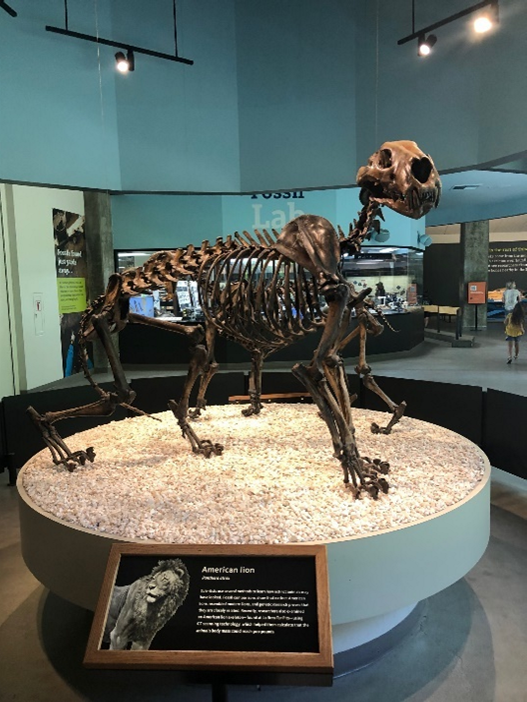
Figure 3: Fossil display of an American lion at the La Brea Tar Pit Museum. Photo taken by author.
While many species went extinct entering the Holocene, some species were able to survive the changing climate and are extant today. One such example is the reindeer (note: they are often called caribou in North America, but they are the same species). As the glaciers receded, populations shifted north. Despite up to an 84% decrease in range of the species28 and regional extirpation, there are populations thriving today in Arctic and subarctic regions in North America, Europe, and Asia. There are other examples of species that survive in some capacity today (e.g., polar bears, muskox, bison).
Predicting the impact of climate change on extant species
While historical evidence provides answers to how past populations of animals survived/did not survive changing climates, it is not clear how current species will handle the climate crisis facing us today. Indeed, the temperature increase following the Pleistocene was too much for many of the species, and the warming was over 6000 years. With modern day climate change, we will see a similar increase in temperature, but over the course of 100 years. There is no doubt that many species are threatened, and the next sections of the unit will focus on a handful of species.
Polar Bears
Polar bears (Ursus maritimus) live almost exclusively inside the Arctic circles and are well-adapted to the cold climate. They have a layer of blubber under their coat that provides excellent insulation, along with a thick coat of fur with hollow hair that blocks the cold temperatures. Polar bears are so efficient at storing heat that they often do not show up on infrared cameras. Their characteristic white fur serves as a camouflage adaptation that allows them to stay hidden from potential prey. Polar bears also have adaptations for hunting on sea-ice and eating blubber of seals. They have an elongated skull compared to the brown bear, with longer canines and smaller molars that allows them to hunt for seals and fish more effectively29. Their large feet allow them to distribute their weight across sea-ice. They are ambush predators that hunt by waiting near holes in the ice. When seals come up for air, the polar bears are waiting. They lack access to seals during summer months because of melting sea-ice, and they survive the summer by using their fat stores30.
While there are an estimated 21,000 polar bears in the wild today, they are threatened by climate change. Alarmingly, temperatures in the Arctic reached over 100o F in June of 202031. Indeed, the Arctic has already seen nearly a 5o F increase in surface air temperature since 196032 and is warming at 4 times the rate as the rest of the globe33. This is due to a positive feedback loop. Sea-ice is effective at reflecting infrared radiation (albedo) back into the atmosphere which leads to lower temperatures. With climate change, warmer temperatures lead to reduced sea-ice, which leads to less albedo, which leads to more infrared absorption and higher temperatures (and the cycle continues). It is predicted that rising temperatures near the Arctic circle will lead to a sizable reduction of sea ice, the bears’ main habitat. How will the bears respond to the warming climate? Range shifts seem unlikely. The loss of sea ice will make it more difficult for the animals to find food. Pictures of starving polar bears have been shocking. In addition, loss of sea ice will push the bears closer to terrestrial areas inhabited by humans, leading to further challenges for the animal. Simulations of different climate models show that under the High scenario, reproduction rates of polar bear subpopulations will dwindle, leading to very few animals by 210034. Other studies show that even with the Medium scenario, longer seasons with no sea-ice will make it very difficult for the bears to find food35. Mitigating CO2 release may lead to persisting numbers, but the animals surely face peril, and extinction in the wild is a strong possibility.
American Pika
The American Pika (Ochotona princeps) is a small lagomorph that is closely related to hares and rabbits (see Figure 4a). Adults weigh approximately 6 ounces, and they live in the mountains of the western United States and Canada. American Pikas do not hibernate and have a relatively high metabolic rate36. They are diurnal, looking for food throughout the day. They often live above the tree line and feed on grass and other plants. Pikas prefer the cold weather at high elevations. They have structural adaptations from the cold, including thick coats that allow them to conserve heat efficiently. Other adaptations include a black and brown speckled fur that allows them to hide from predators (e.g., weasels and eagles), amongst rocks. Their furry paws are well adapted for walking across snow. Behavioral adaptations include storing food for the winter. Pikas often stack grass and other plants into “haypiles” for storage (see Figure 4b). They do not burrow, but instead live within the crevices of cracked bedrock and slopes known as a talus. They are also vocal animals, using calls to warn others of predators37.
While American pikas are currently thriving in cool mountains, how will they respond to future climate change? Climate models are predicting increased temperatures across the western US with higher number of days of extreme heat during the summer. Increases in temperature are predicted to lead to less snowpack during the winter. Some studies have shown that pikas are extremely sensitive to heat. They have an extremely high, but stable resting body temperature of 105oF with a lethal upper limit of 109oF38. Pikas also rely on snowpack in the winter for thermal insulation. There is concern that with less snow, pikas will be exposed to dangerous cold39. Moreover, juvenile pikas tend to disperse in the summer, making them vulnerable to hotter temperatures40. Lastly, pikas, at first glance, would not seem to be good candidates for range shifts; once established, adult pikas rarely leave their home talus, and studies show limited genetic dispersal41. There is evidence of regional extirpation of pikas within areas of the Great Basin42.
While the American Pika could very well be threatened by climate change, there is reason for hope that survival is possible. It is possible that the species may either adapt to the climate, show range shifts, or both. Studies have shown that pikas may alter their behavior to adapt to hotter temperatures. While pikas typically are diurnal and forage throughout the day, studies have shown in hotter environments or at lower elevations, the animals are foraging in the morning and retreating to their talus during the hotter parts of the day. Indeed, on hot summer days, temperatures inside the talus have been recorded at 9-14o C (16-29o F) cooler than surface temperatures43. Some pikas have shown corpuscular activity patterns not normally seen44. Pikas in hotter and lower elevations are showing a reduction in hay piles as the winters are not as harsh and require less hoarding45.There is also evidence that American pikas are undergoing range shifts with new populations appearing in unexpected regions. Pikas in Yosemite are moving up the mountain; they have shown an elevation increase of 153 meters at the lower limit since 192046. In the Great Basin region of Nevada, evidence shows a 364-meter upper-limit shift in elevation since 199947. Populations of pikas are also unexpectedly appearing at new sites of lower elevation that they did not previously occupy48. With behavioral adaptations and range shifts, it seems that American pikas may very well be equipped to handle our changing climate.
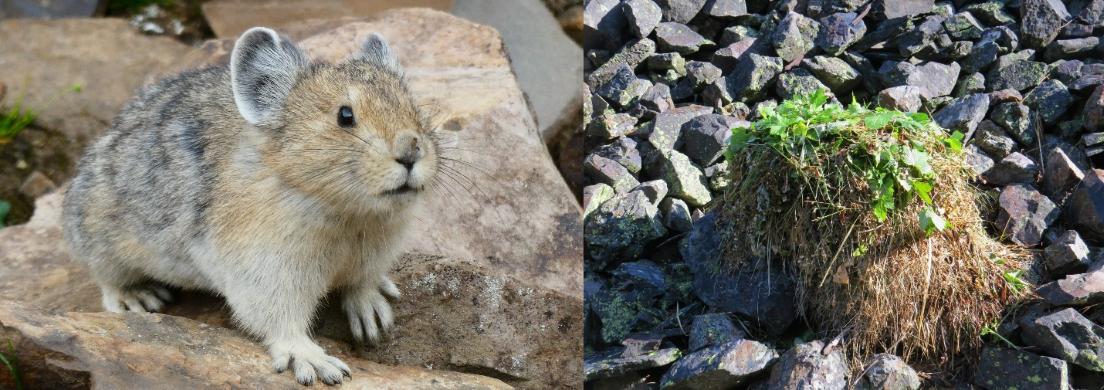
Figure 4a: Photo of an American Pika taken by Derek Ryder. Figure 4b: Photo of a Pika hay pile courtesy of USGS.
Painted turtle
The painted turtle (Chrysemys picta) is the most widespread terrestrial turtle in the United States, with regions ranging all over the central and northern Unites States (native or introduced to 46 of the 48 contiguous states49) and Canada50. The turtles live in a variety of climates, preferring cool rivers and lakes in Minnesota, with subspecies thriving in the warmer waters of Georgia. They are one of the more common turtles used as pets. There are 4 different subspecies of painted turtle, Northern, Midland, Western, and Southern, and their regionality generally corresponds with their name.
The painted turtle has a number of adaptations that have allowed them to be so widespread. The most obvious adaptation is the central defensive of turtles, a shell for protection against predators. Their strong legs and buoyant bodies make them excellent swimmers, and they spend a great deal of time in or near lakes and streams. They eat a variety of food around lakes; plants, insects, fish, tadpoles. They are ectothermic and must carefully regulate their body temperature with behavior, keeping an internal body temperature between 70o F and 77o F51, though studies have shown that upper range can reach nearly 88oF52. They have remarkable thermal plasticity, surviving in very cold and very hot environments. During extremely hot times, they keep in the water and in shade during the hottest times of the day. During winter, they bask in the sun for extended periods of time. When the weather becomes freezing, they hibernate and special adaptations in their skin and blood keep them super-cooled53. Moreover, they actually hibernate under water and ice. Special adaptations allow them to slow metabolism without the need for Oxygen for 4-5 months54.
With a remarkable range and thermal plasticity, it would seem that the painted turtle will be safe as our climate warms and effects of climate change set in. There remains one problem; the peculiar way that sex is determined within the egg. Unlike mammals, the sex is not determined during fertilization. Instead, turtles, alligators, and crocodiles lay eggs, and the sex of the offspring within the egg is determined by the relative temperature during incubation, a process called temperature-dependent sex determination. Female painted turtles lay eggs in sandy areas in late summer, and the eggs incubate for 72-80 days. During the middle third portion of the incubation, the temperature of the eggs determines the sex. If the temperature is between 22 and 26o C (72o – 79oF), the hatchlings are male. If the temperature is above 28oC (82oF), the hatchling is female. If the temperature is between the two, half will be male and half will be female55. With traditional climate, turtles maintained optimal sex ratios with this process. What happens when temperatures rise? Increased temperature and increased extreme temperatures will occur regularly as the eggs incubate. With the eggs being buried, they stay cooler than the outside temperature. Still, with heat greatly increasing across the country due to climate change, the odds are that most of the offspring will be born female. While it is unclear whether this is occurring yet in the painted turtle, there is evidence that it is already strongly affecting sea turtles. A recent study showed that 99% of juvenile green sea turtles in Australia are now born female.56 While a 50/50 sex ratio is not needed (e.g., female green sea turtles breed once every 3 years, males breed yearly), extremely skewed sex ratios can become problematic. A study simulated populations of sea turtles using the three IPCC scenarios discussed above with consideration to changing sex ratios. It predicted extinction of the species using the Medium and High scenarios if no conservation or evolution occurs. For the painted turtle, it is too early to know the outcome; will they find ways to adapt and change sex ratios? It remains to be seen, but there is a real threat to the species.
Florida panther
The Florida panther (Puma concolor coryi) is a subspecies of puma (also called cougars or mountain lions; see Figure 5). While they once roamed many areas of the southeastern United States from Louisiana to Florida, today they are only found in the southwest tip of Florida. Currently the Florida panther is already extremely endangered with an estimated 230 in the wild57. The cats are completely carnivorous with structural adaptations for hunting and feeding. They have fast twitch muscles in their legs, giving them a quick burst and the agility to quickly take down prey. They largely feed on white-tailed deer, wild hogs, and raccoons58. Like other cats, their retractable claws and sharp fangs serve as deadly tools. Adult males are 7 feet long and weigh around 125 pounds with females measuring 6 feet in length and weighing around 85 pounds. The Florida panther lives largely in wooded areas, the everglades, and fresh and mixed wetlands. They are largely solitary animals with adult males defending areas of approximately 200 square miles while females have territories of about 75 miles59.
Climate change will have tremendous impacts on the panther’s habitat. Currently, the animal’s historical range has already been reduced to 5% of its original area, largely due to human activity60. Climate models predict that along with rising temperatures, sea rise and flooding will cause potential problems. Sea-level rise has already reached between 1 and 3 feet in low lying areas in Florida61. Under the High IPCC model, an additional 8 feet is possible by 2100. Habitat loss as the result of flooding is inevitable, but effects could be compounded by change in human land usage. Currently in Florida, 575,000 people live in areas that are either “extreme” or “high” risk of sea-level rise and models predict as many as 2 million people may be displaced62. Human populations could shift further inland, further reducing panther habitat. Sea level rise also risks the influx of salinity to freshwater areas for the panthers and their food sources.
Invasive species also threaten the livelihood of Florida panthers. Since 2003, Burmese pythons have been appearing in large numbers in the Florida everglades. Studies have shown an 80-100% decline in raccoons, white-tailed deer, opossums, and rabbits in the area63. These mammals serve as important food sources for the panthers. Marsh rabbits, in particular, have been regionally extirpated. In a study in 2015, researchers re-introduced marsh rabbits into the Everglades National Park and tracked the rabbits with transmitters. The reintroduction was not successful as 77% of the rabbits were eaten by pythons64.
Overall, the future of the Florida panther looks grim. Climate change and habitat loss could be devastating. Without successful conservation efforts, it is difficult to see a long-term future for the cats.
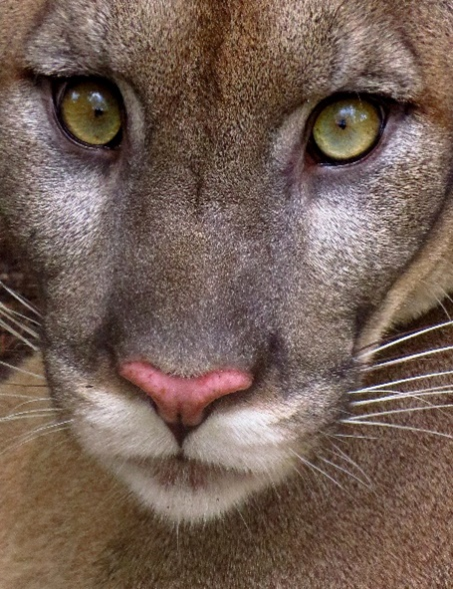
Figure 5: A Florida Panther in Big Cypress Reservation, Big Cypress, Fl. Photo by Meg Jerrard

Comments: